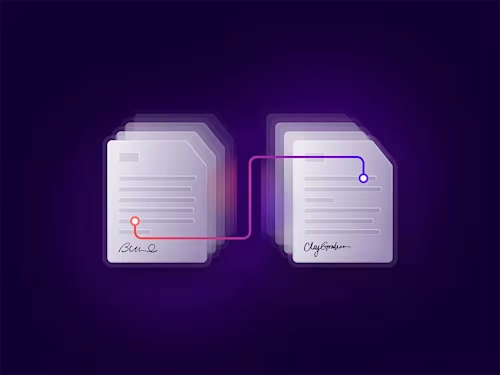
Coding for the world
Docusign localization specialist Bettina Becker begins a series on best practices for coding your application for an international audience.

In this blog series I would like to give you an insight on the importance of writing code that makes any of your users, anywhere in the world, a happy user. We are going to talk about money, recycling, clues, commotions, and lots more. First, though, I’d like to introduce some basic concepts relevant to global coding you might have always wondered about.
Differences between translation, localization, internationalization and globalization
Globalization, localization, translation, internationalization: you may have heard those buzz words. They all have one thing in common: code that is written with a global user base in mind. Code that is flexible and dynamic: localization-friendly.
Translation
Translation is the process of converting one written language to another language. Translation is all about text conversion. The translation needs to convey the meaning of the original language into the target language.
Localization
With localization, we transform a product into something that resonates with a specific culture. Best case scenario: The product feels like it was created in the local market. This can mean, in addition to translation, using a different color scheme or a different time format. Localization is basically translation while catering to the needs of the specific target market.
Internationalization
Internationalization involves building products with a global audience in mind so they can be easily adapted to launch in different national markets without the need to retouch the code, content or designs. Internationalization is basically the process of preparing products, services, and back ends for the expansion into global markets; for instance, implementing the correct functions to show the calendar format the user expects. Another common technique is to store all text strings in separate resource files, enabling the user experience to be translated while leaving the codebase untouched.
Globalization
For Docusign, globalization means connecting with our customers around the world in different national markets and bringing people, cultures, and economies of different countries and regions closer together through our products. Globalization is the result of localization and internationalization: building and delivering products for the intended audience.
In the context of localization, you see mysterious letter-number-combinations L10N, T9N, I18N and G11N. Instead of writing the long words localization, translation, internationalization, and globalization, we replace the inner letters with a number representing the number of letters replaced. Mystery solved!
Enough with the basics. Let’s dive right into Part 1: Why should I care about localization?. We will have a new blog post every month; here is a sneak peek at what to expect.
Coding for the world
Part 4: Everyone talks about recycling; we are not, or are we?
Note: Thanks to Carlos Barbero-Cortés of Docusign for consultation and feedback.
Additional resources

Bettina Becker has been with Docusign since 2016. She is our lead language specialist for German. Besides that, she works on a variety of projects, and she loves all her roles: linguist, translator, evangelist, manager, tester, advocate, supporter and negotiator.
Related posts

 DevelopersPublished Apr 16, 2025
DevelopersPublished Apr 16, 2025Introducing private extension apps
 DevelopersPublished Apr 16, 2025
DevelopersPublished Apr 16, 2025Seamlessly integrating Maestro with data systems using data IO extensions

Introducing private extension apps

Seamlessly integrating Maestro with data systems using data IO extensions
Discover what's new with Docusign IAM or start with eSignature for free



